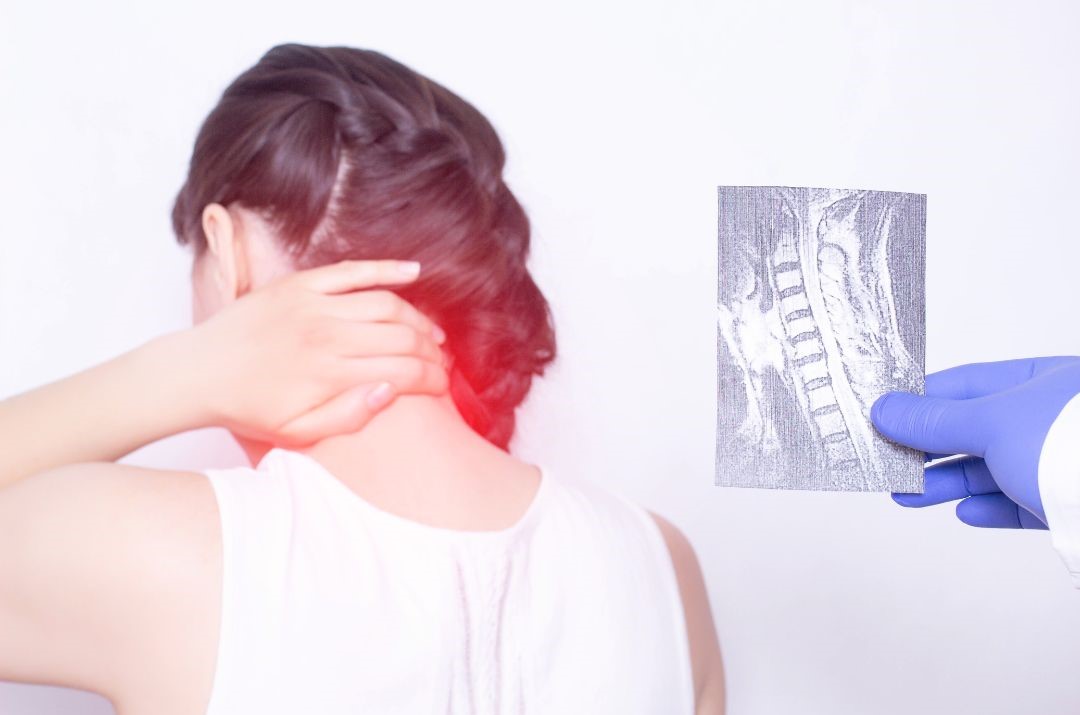
HELP – I’ve Pinched A Nerve In My Neck!
Think you’ve pinched a nerve in your neck? Chances are you probably haven’t. But you have done something and the chiropractors at Bayside Chiropractic are here to help. The term “pinched nerve” is often used to describe the sensation of pain, numbness, or tingling that occurs when a nerve is compressed or irritated. However, the nerve itself is not actually “pinched” in the traditional sense of the word. Now that we’ve gotten that pedantic bit out of the way we can concentrate on the important stuff: what, why, and how to fix it.
What?
A “pinched nerve” occurs when surrounding tissues, such as muscles, tendons, or spinal discs, put pressure on the nerve, causing it to become compressed or irritated. This pressure can disrupt the nerve’s ability to transmit signals properly, leading to the sensation of pain, numbness, or tingling. They can occur anywhere in the body but are most common in the neck and back. The symptoms of a pinched nerve in the neck can vary depending on which nerve is affected. For example, if the pinched nerve is in the C6 nerve root, you may experience pain and numbness in your bicep and wrist. If the pinched nerve is in the C7 nerve root, you may experience pain and weakness in your triceps and forearm. But the pain or numbness can be anywhere, depending on the nerve affected.
Why?
This compression can be caused by a variety of factors, including poor posture, repetitive strain, and/or trauma. Let’s investigate a bit more – a pinched nerve in the neck can lead to a condition known as cervical radiculopathy and can be caused by a few different things, including cervical stenosis and herniated discs. (OK – we know that all sounds scary, but bear with us – understanding your “pinched nerve” gives you power over it.)
And just so we’re not being totally circular: cervical stenosis is a type of spinal stenosis – a condition that occurs when the spinal canal and other ‘passageways’ of the nerves narrow due to bony changes in the skeleton (in this case in the neck), putting pressure on the spinal cord and nerves. A herniated disc occurs when the soft, jelly-like substance inside a spinal disc pushes out through a tear in the disc’s outer layer, putting pressure on the surrounding nerves. That all sounds a bit scary but…
a.) We’ve got you; and
b.) While things can be bad, they’re usually better than you first think. Refer to point A.
Sometimes a sudden, traumatic event (such as a car accident) leads to this compression, but often it builds up over time – holding a position all day while working at a computer, or even sleeping in a way that holds your head too high or too low can, over time, lead to a “pinched nerve.
What to Do?
Fortunately, there are many treatment options available for pinched nerves, including chiropractic adjustments, massage therapy, exercises, acupuncture and dry needling. These treatments can help relieve pressure on the affected nerve, reduce pain and inflammation, and improve nerve function. Your chiropractor will use gentle, targeted adjustments to correct spinal misalignments and relieve pressure on the effected nerve. This can help reduce pain and improve nerve function, allowing you to resume normal activities and help you deal with the postural issues (desk set-up and so on) that might have led to the “pinched nerve” in the first place.
So, be reassured – nothing might be pinched, but some nerves might have been compressed. And the chiropractors at Bayside Chiropractic are here to help. Call us on (02) 9523 9940 to make an appointment. You can find us on Facebook for more helpful information.
Read more of our Blogs here.

